Central heating systems designed today are often more than just about the primary heat source. The range of complementary heating technologies which are now available provides homeowners with an exciting opportunity to go even greener. Here, we take at look at how increasing overall system efficiencies by combining technologies can be achieved in three easy steps.
Products
Knowledge & Support
Explore our Knowledge Hub:
Tips & Advice Education Area Case Studies The Grant House Virtual House FAQs Glossary Visit the Knowledge HubLooking for Help & Support:
Product Support Find an Installer Find a Merchant Extended Warranties ServicePlan Product GuaranteesProducts
Knowledge & Support
Explore our Knowledge Hub:
Tips & Advice Education Area Case Studies The Grant House Virtual House FAQs Glossary Visit the Knowledge HubLooking for Help & Support:
Product Support Find an Installer Find a Merchant Extended Warranties ServicePlan Product Guarantees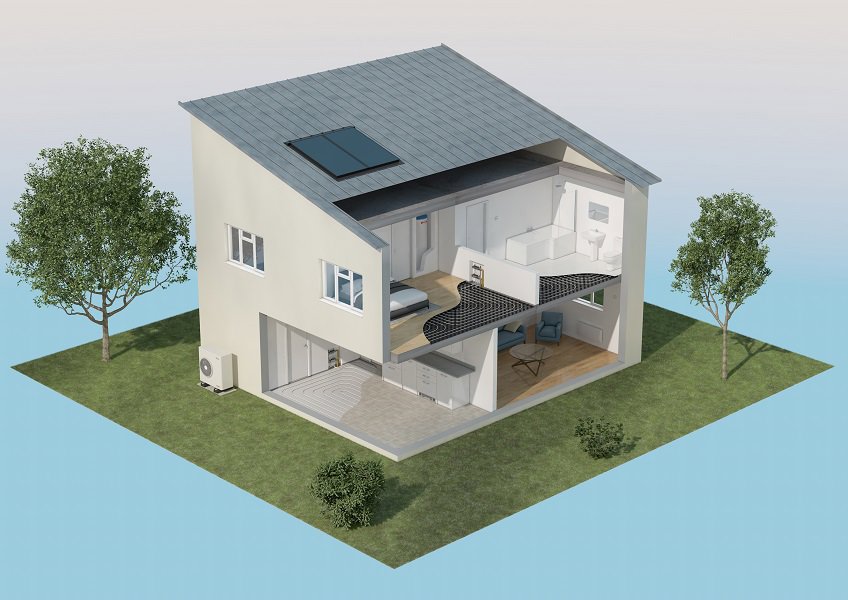
Maximising the benefits of combined heating technologies
|
The heating market today offers a selection of products which are significantly more efficient than their predecessors. What’s more, the efficiencies of these products can be further improved when they are partnered with complementary technologies. This can be as simple as installing a quality controls system (we cover this in more depth in a couple of our other blogs) or it can be much more comprehensive by combining heat sources to help the overall heating system operate at its most efficient operation. Let us take a deeper look into how you could maximise the benefits when upgrading your heating system.
How maximise the efficiency of your new heating system
Let us take a deeper look into how you could maximise the benefits when upgrading your heating system in three steps:
- Step 1 – What types of sustainable heating systems are available to you? This could be a hybrid heating system which combines a heat pump with a traditional fossil appliance or you may be ready to transition to 100% renewables with an air source heat pump.
- Step 2 – Have you considered other technologies which could work alongside your primary heat source(s)? This could be a solar thermal system to heat your hot water or a new high efficiency hot water cylinder.
- Step 3 – Are your radiators needing an upgrade to more efficient alternatives? When changing to a different heating system, whether it is with a replacement boiler or a new heat pump, it may not be necessary to replace your existing heat emitters but it is worth researching whether a different type of radiator or underfloor heating could improve how efficiently your heat source works.
Step 1 to more efficient heating - consider a hybrid
The starting point for any new heating system is the heat source itself and the specific requirements of your home will determine the type of heat source you choose. For example, if your home heating is currently fuelled by a fossil fuel boiler and it needs replacing, you could consider the hybrid route which brings together the best of both worlds. One hybrid combination is an oil boiler with an air source heat pump, such as the Grant VortexAir. In distress purchase situations, the oil boiler can be installed straightaway to quickly restore heat and then the heat pump can follow once the necessary adjustments have been made to the rest of the system.
What are the features of the VortexAir Hybrid?
The Grant VortexAir combines a 15-26kW Vortex oil boiler with a 17kW Aerona³ air source heat pump. This oil boiler/heat pump hybrid:
- operates using four modes (oil boiler operation, heat pump operation or operations when both units work), automatically switching to the mode that most effectively meets the heating demand
- uses the heat pump to fulfil as much of the heat demand as possible
- use the oil boiler to meet any shortfall of heat demand when required, such as when temperatures are colder.
The VortexAir hybrid, therefore, exemplifies how two heat sources can be brought together to work in tandem, efficiently and effectively.
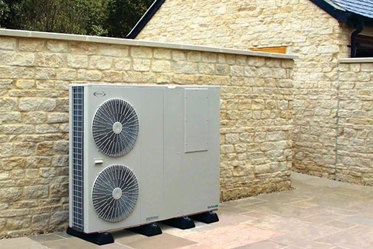
Keep your existing boiler with the EvoLink Hybrid System Hub
Another hybrid heating solution is the Grant EvoLink Hybrid System Hub which cleverly combines an Aerona³ heat pump with an existing heating system, such as a gas, oil or LPG boiler. The EvoLink is a wall-mounted unit which houses the hydraulics needed to connect a new Grant heat pump to an existing fossil fuel boiler. You can therefore keep your current boiler and incorporate renewable energy into your heating system, with the EvoLink’s control system allowing the Aerona³ heat pump to operate as much as possible and reducing the demand on the original heat source.
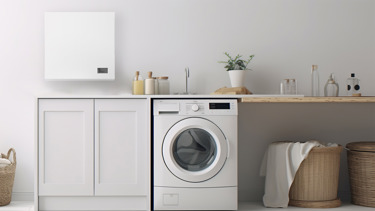
Learn more about the advantages of hybrid heating systems in our other blog.
An alternative Step 1 - go completely green with your new heating system
If you are embarking on a new build or renovation project, you may opt for a totally renewable heating system like an air source heat pump. Heat pumps lend themselves very favourably to properties where floor and wall insulation levels are high and when other parts of the system can be upgraded too, such as the radiators and pipework. Grant UK supply two ranges of air-to-water heat pumps – the Aerona³ heat pumps and the Aerona 290 heat pumps.
Grant’s Aerona³ R32 air source heat pumps are:
- available in heating outputs of 6kW, 10kW, 13kW and 17kW
- incredibly high performing and achieve excellent efficiencies
- MCS accredited so eligible for Government funding such as the Boiler Upgrade Scheme (BUS) in England and Wales and the Home Energy Scotland Funding Scheme (HES), so you could benefit not only from a lower carbon footprint but you could also receive financial support to swap to a low carbon heating system.
The Aerona 290 air source heat pump range is Grant UK’s latest generation of heat pump technologies and these models:
- use the more environmentally friendly R290 refrigerant
- are available in five heating outputs from 4kW up to 15.5kW
- are Quiet Mark accredited with incredibly low sound levels when operating
- are MCS accredited so also eligible for Government schemes including BUS and HES.
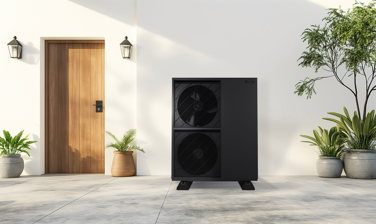
Learn more about low-carbon heat pumps
If you would like to read more about air source heat pumps (ASHPs), please follow the links below:
- Discover how air source heat pumps operate
- Read about the benefits of R290 heat pumps
- Research what properties ASHPs are suitable for
- View Grant’s full range of air source heat pumps
Air source heat pumps are very efficient heating products in their own right, however, when combined with other technologies, a heat pump can achieve its ultimate potential which we will explore more about in Steps 2 and 3.
Step 2 - select complementary technologies for your heating system
Selecting the right supporting technologies is almost as important as choosing the most suitable heat source itself. By installing a solar thermal system and high efficiency cylinder alongside a heat pump, the overall heating system can work more efficiently.
Solar thermal can deliver a significant proportion of your home’s hot water (even on cloudy days) which can help reduce the demand on the heat pump. By using the sun’s free energy to heat up the water which then flows to your taps and showers, you can enjoy cost savings as well. Visit one of our other blogs to read about the benefits of solar thermal hot water heating systems.
Installing a suitable twin coil cylinder will also help by effectively extracting and storing the heat produced by both the heat pump and a solar thermal system. Grant's Quick Recovery Hot Water Cylinders have been specifically designed to work alongside Aerona³ and Aerona 290 heat pumps, with a larger primary coil and excellent insultation which combine to deliver maximum heat transfer and recovery as well as reducing heat loss. Essentially, by choosing the right cylinder, you can help reduce the workload on your heat pump and, when you add in solar thermal, the results can be even better.
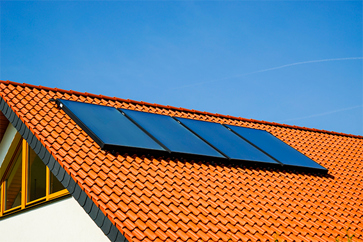
Step 3 - choose appropriate heat emitters for your home
You’ve chosen your primary heat source; you’ve decided upon installing solar thermal and a new high efficiency cylinder; the final part of the jigsaw which needs completing are the heat emitters. Heat emitters are tasked with the role of transferring the heat from the system into the living space that you occupy, relax and live within. The overall efficiency of your home heating system is dependent on the heat emitter(s) selected for your property – the high efficiencies of the heat source can be undermined if the wrong type and size of emitters are selected.
Why do heat pumps need heat emitters with larger surface areas?
Air source heat pumps work most efficiently when the flow temperature of the system water is lower than that of a traditional boiler heating system. Typically, these lower flow temperatures will be between 35ºC - 55ºC. With low temperature systems, it is crucial to install heat emitters with sufficient surface areas to transfer the heat. Although the flow temperatures are lower, your rooms will still be just a cosy provided your heat emitters are correctly sized.
This is one of the reasons why underfloor heating is often installed alongside a heat pump. An underfloor heating system allows the whole floor to become a surface area for heat transfer, evenly radiating the warmth upwards into the occupied living spaces within your home. When set correctly, underfloor heating can achieve and maintain desired room temperatures allowing the heat pump to operate at its best, in an even, balanced cycle.
Read our complete guide to air source heat pumps and underfloor heating to learn more about why they work so well together.
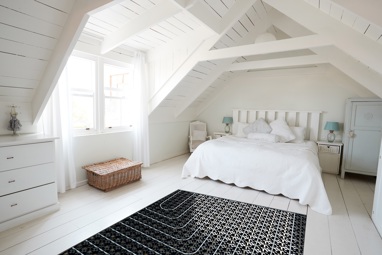
Aluminium radiators for heat pumps
Another choice of heat emitter which is designed to work efficiently and effectively with low temperature heat pumps are aluminium radiators, such as the Grant Afinia radiator range. These radiators have a low water content and aluminium has excellent thermal conductivity which makes the Afinia radiators very responsive to changes in temperature demand and ideally suited to complement the efficient operation of an air source heat pump. These radiators can be installed with ease, replacing existing radiators or adding new radiators to your heating system.
Package solutions from Grant UK
There you have it - maximising the efficiency of your heating system can be achieved in more ways than one but three elements remain at the core of any good heating package – efficient heat source, suitable complementary technologies, and appropriate heat emitters. Here at Grant UK, we can deliver all of these products so speak to a member of our Team or contact your local G1 Installer to see which type of Grant heating system is best for your home.
- View the Grant Hybrid Heating Range
- Discover the Aerona air-to-water heat pumps
- Read about Grant solar thermal systems and hot water storage cylinders
- Browse Grant Heat Emitters
- Find Grant G1 Installers in your area
- Speak to our Design and Specification Team to discuss your plans for a renewable heating system.
This blog was originally published on 30th June 2020 and updated on 9th October 2025.
Subscribe to Grant News
Receive the latest news and updates about Grant products and services